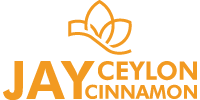History of Ceylon Cinnamon

The history of Cinnamon goes way back to 2800 B.C as it was the first traded spice in the world. It has been stated that cinnamon was one of the motives for historical voyages by Christopher Colombus and Vasco De Gamma to Sri Lanka and South Africa.
Cinnamon grown in Sri Lanka gained a reputation in the international market due to its aroma, quality, flavor, and color and this brought the famous label “Ceylon Cinnamon” which many Sri Lankans are proud of. The Ceylon cinnamon belongs to the Lauraceae family and is considered superior in quality to its counterpart Cassia cinnamon.
In 1505 a Portuguese Fleet De Almeida was blown to Sri Lanka due to a storm at sea. The Portuguese found the country to be resourceful and blindly stumbled across a secret source of the best cinnamon in the world. Eventually, the Portuguese took control of the cinnamon trade and built a fort in Colombo to provide security to control the spice trade.
After the Dutch captured Sri Lanka and drove away the Portuguese in the mid-17th century, they gained control of the Ceylon cinnamon monopoly. It is thereby confirmed as in the up-country agreement signed between the then Sri Lankan King Sri Keerthi Rajasingha and the Dutch on 14th February 1766 had permitted them to cut and peel cinnamon in certain areas of the country in exchange for the protection of the kingdom.

Image from Lankapura.com
Finally, when the British were involved, the spice trade switched hands in favor of the British until the natives of Ceylon took power in 1948. Now pure Ceylon Cinnamon is in the hands of the local cinnamon exporters and suppliers today.
Cinnamon has a wide range of products, including cinnamon bark, cinnamon oil, cinnamon quills, and cinnamon powder, which is produced thanks to the cinnamon tree after the tree is pruned for two years and is mainly harvested after two rainy seasons.
Sri Lanka at present is the major cinnamon producer in the global markets. The country supplies 90% of cinnamon demand in the world which makes it possible for Sri Lanka to penetrate niche market segments in the international market.
References
G.D. De Silva Sons cinnamon exporters in Sri Lanka. (2013). The Cinnamon Story. Www.Topcinnamon.Com.
Pure Ceylon Cinnamon. (2022). Historical Background of Ceylon Cinnamon. Www.Pureceyloncinnamon.Edb.Gov.Lk.
Sri Lanka Export Development Board. (2023, January 13). THE HISTORY OF PURE CEYLON CINNAMON, THE SPICE OF LIFE. Www.Srilankabusiness.Com.
